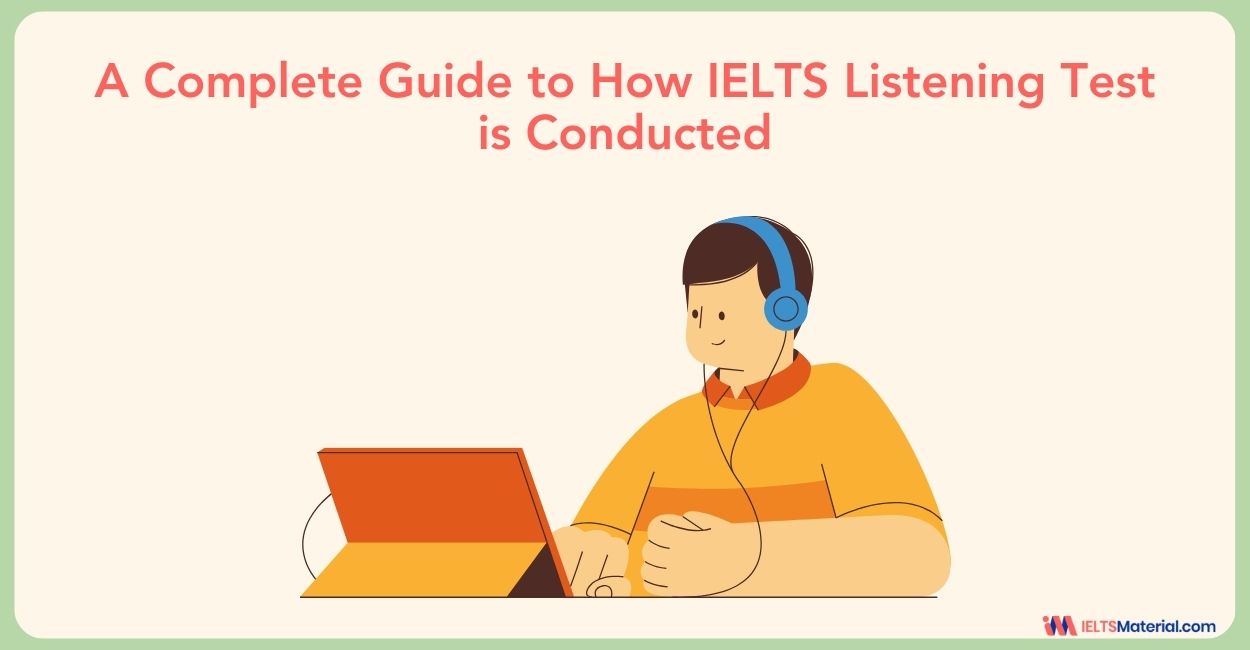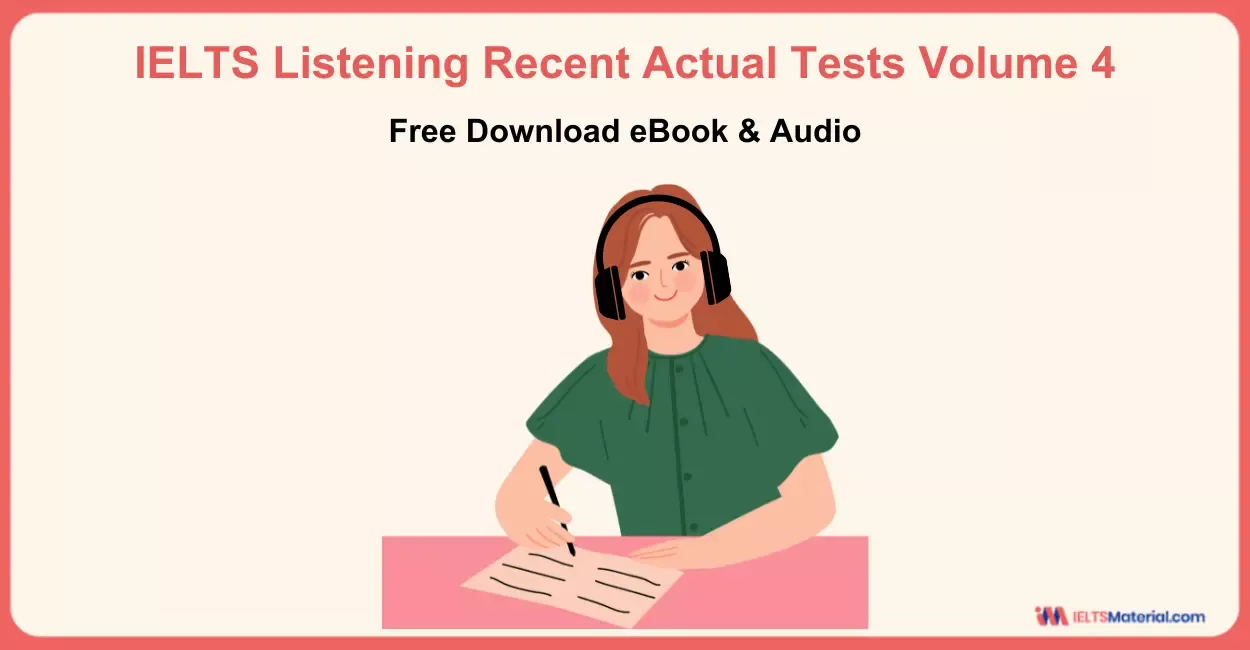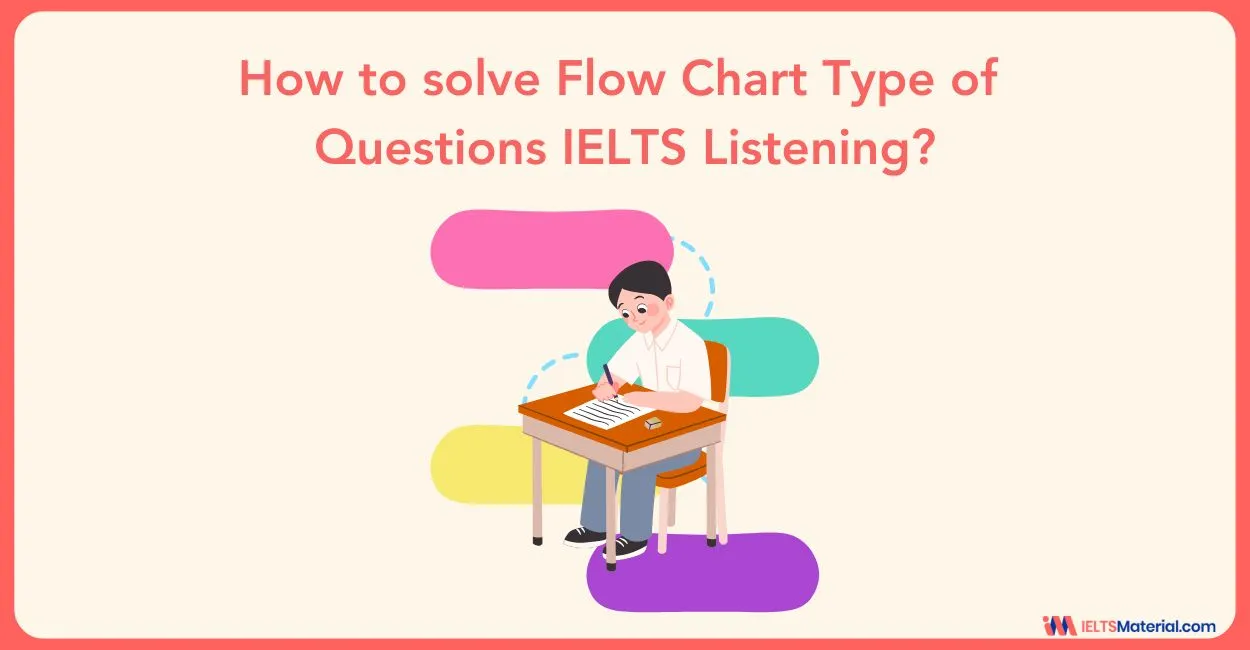A Complete Guide to How IELTS Listening Test is Conducted?
4 min read
Updated On
-
Copy link
Wondering what happens during the IELTS Listening test? Discover how it’s conducted step-by-step, with key differences between paper and computer formats, along with smart tips to boost your IELTS listening score.
Table of Contents
- When Is the IELTS Listening Test Conducted?
- IELTS Listening Test: Paper-Based Format
- IELTS Listening Test: Computer-Based Format
- Paper-Based vs Computer-Based IELTS Listening: Key Differences
- IELTS Listening Test Format
- Types of Questions in IELTS Listening
- What to Expect on IELTS Listening Test Day?
- Useful IELTS Listening Practice Tests
- IELTS Listening Study Materials

Limited-Time Offer : Access a FREE 10-Day IELTS Study Plan!
Among IELTS exam aspirants, the Listening module is often seen as the least complicated of the four sections. While some may find it a bit challenging, the best way to overcome this is by understanding the basics and knowing exactly how the IELTS Listening test is conducted.
So, let’s dive into the format, procedure, and key details of the IELTS Listening test so that you can prepare with confidence!
When Is the IELTS Listening Test Conducted?
The Listening section is administered after the IELTS Writing test, followed by the Reading and Speaking sections (although the order may vary slightly depending on the test centre). The Listening test is conducted in two formats:
- Paper-based format
- Computer-based format
Both formats have the same content, difficulty level, and scoring system — only the mode of delivery and answer submission vary.
IELTS Listening Test: Paper-Based Format
Here’s what to expect if you are taking the paper-based IELTS Listening test:
- Once verification is completed, you will be seated at your assigned desk.
- You’ll be given:
- A test booklet
- An answer sheet
- Headphones
- A pencil and eraser
- You must not open the booklet until instructed.
- After instructions, the recording begins. The audio introduces each section. For example:
-
“You will hear a conversation between an officer of the small claims tribunal and a consumer who wants to make a claim. First, you have some time to look at questions 1 to 6.”
-
- You will get pauses before each section to read the questions.
- Once the recording ends, you get 10 minutes to transfer answers from the question booklet to the answer sheet.
- Headphones must be kept on until you're told to remove them.
IELTS Listening Test: Computer-Based Format
In the computer-delivered IELTS Listening test, the steps are slightly different:
- After registration, you will be directed to your assigned computer station.
- You’ll be provided with headphones and a pen/pencil and note paper for rough work.
- You’ll enter your answers directly into the computer interface.
- The audio plays through your headphones, and timers are shown on the screen.
- You’ll get pauses between sections but no extra 10 minutes after the audio ends. Instead, you’ll have 2 minutes to check your answers.
Join Our Online IELTS Classes and Get Expert Guidance to Reach Band 8+!
Paper-Based vs Computer-Based IELTS Listening: Key Differences
Here's a table with an overview of key differences between Paper-based and Computer-based IELTS Listening test:
| Feature | Paper-Based | Computer-Based |
|---|---|---|
| Mode of answer | Write on the answer sheet | Type on screen |
| Extra time to transfer answers | Yes (10 mins) | No extra time (2 mins for review) |
| Equipment | Headphones, paper booklet | Headphones, computer |
| Room setting | Larger rooms | Smaller rooms with computers |
| Note-taking | On question paper | On provided rough paper |
IELTS Listening Test Format
As per the IELTS Test Pattern, the Listening test is 30 minutes long, plus:
- 10 minutes extra (paper-based) to transfer answers, or
- 2 minutes review time (computer-based)
It includes 4 sections, with 10 questions each (40 questions total).
| Section | Audio Type | Context |
|---|---|---|
| Section 1 | Conversation between two people | Everyday context (e.g., making a reservation) |
| Section 2 | Monologue | Informative talk (e.g., local event) |
| Section 3 | Group discussion | Academic/training (e.g., students discussing projects) |
| Section 4 | Monologue | Academic lecture or presentation |
Ready to Boost Your Listening Score? Try Our Free IELTS Listening Practice Tests Now!
Types of Questions in IELTS Listening
You will encounter different question types designed to test your comprehension:
- IELTS Listening Multiple Choice Questions
- IELTS Listening Matching Questions
- IELTS Listening Note Completion
- IELTS Listening Sentence completion
- IELTS Listening Summary completion
- IELTS Listening Short Answer Questions
- IELTS Listening Map Labeling
Each correct answer earns 1 mark, and your final Listening band score is based on the number of correct responses out of 40.
Access free practice materials for a better IELTS listening band score. Download now!
What to Expect on IELTS Listening Test Day?
Here are quick IELTS Listening tips and reminders for the test day:
- Arrive early for registration and verification.
- Test your headphones before the recording starts.
- Use pauses to preview questions and highlight keywords.
- Write clearly — answers must be legible (use all CAPS if preferred).
- Manage your time effectively. Don't leave blanks!
- Follow instructions from the audio very carefully.
Understanding how the IELTS Listening test is conducted is essential for planning your strategy and staying calm under pressure. Whether you're taking the paper-based or computer-based version, being familiar with the structure, flow, and common question types gives you a solid advantage.
Now that you know how it all works, put your knowledge into action. Take practice tests, simulate exam conditions, and prepare to listen to your way to a higher IELTS band score!
Be a part of IELTS webinars & learn how to prepare for the IELTS listening test!
Useful IELTS Listening Practice Tests
Here are some IELTS Listening practice tests you can use to boost your listening skills!
- IELTS Listening Practice Test 2025 with Answers
- IELTS Listening Practice Test 2025 with Answers | FULL IELTS Listening Test
- IELTS Listening Practice Test 2025 with Answers | 05.01.2025
- IELTS Listening Practice Test 2025 with Answers | February
- IELTS Listening Practice Test OCTOBER 2024 with Answers
- IELTS Listening Practice Test 2024 with Answers | 18.02.2024
- IELTS Listening Practice Test 2024 with Answers | 02.03.2024
IELTS Listening Study Materials
Looking to level up your listening score? Explore these expert-recommended IELTS Listening study materials designed to help you master every section of the test.
- How to improve listening sections 3 and 4?
- Useful Resources & Websites For IELTS Listening
- Improve Your Skills: Listening & Speaking For IELTS 6.0 – 7.5 (Ebook)
- 1200 Commonly Repeated Words In the IELTS Listening Test
- IELTS Listening Recent Actual Tests Volume 3 (Ebook & Audio)
- IELTS Listening Recent Actual Tests Volume 4 (Ebook & Audio)
- 15 Days’ Practice For IELTS Listening (Ebook & Audio)
- Should You Use All Capital Letters In The IELTS Listening And Reading Tests
Explore IELTS related articles

Start Preparing for IELTS: Get Your 10-Day Study Plan Today!
Explore other Listening Articles

Nehasri Ravishenbagam

Kasturika Samanta
Recent Articles

Nehasri Ravishenbagam

Nehasri Ravishenbagam

Haniya Yashfeen







Post your Comments